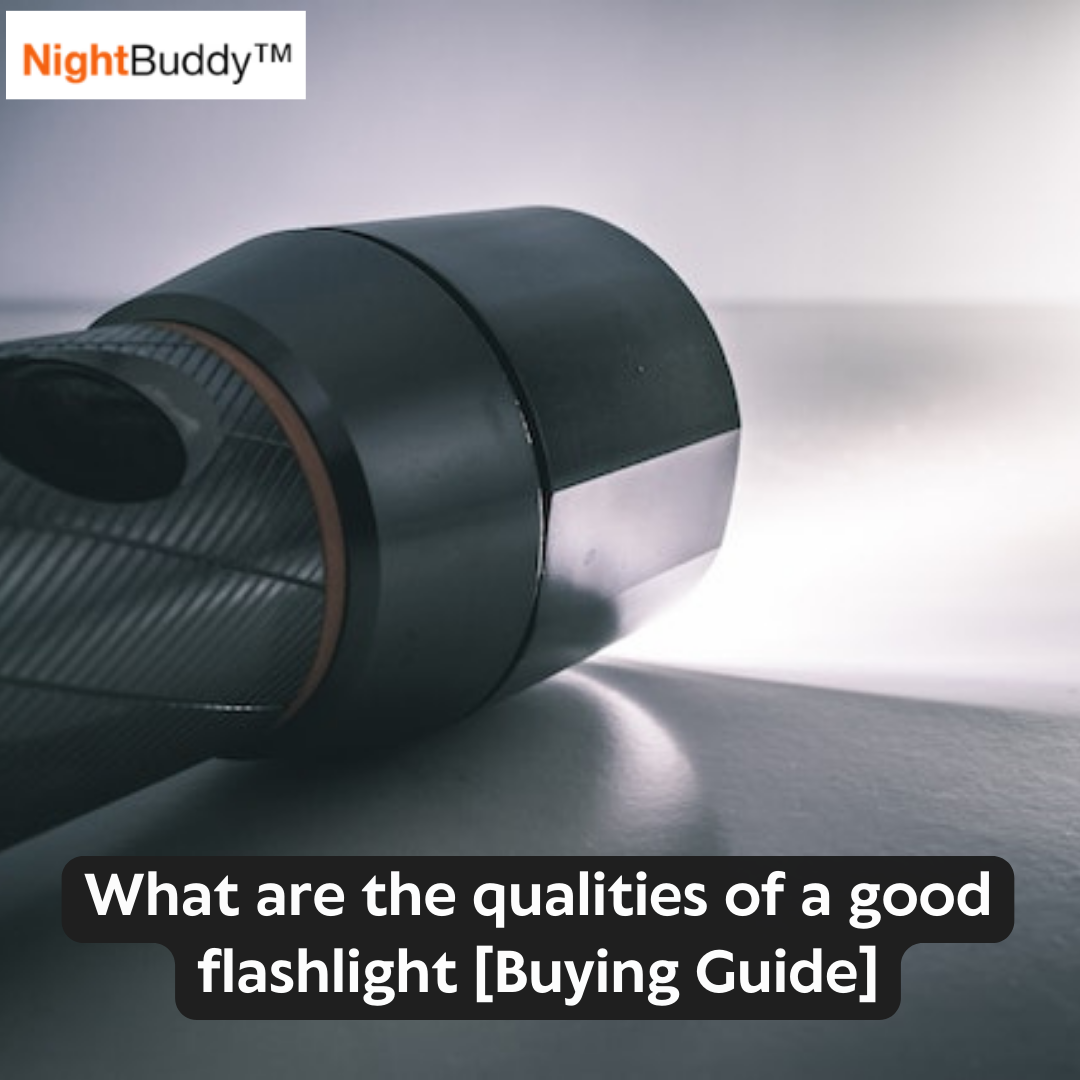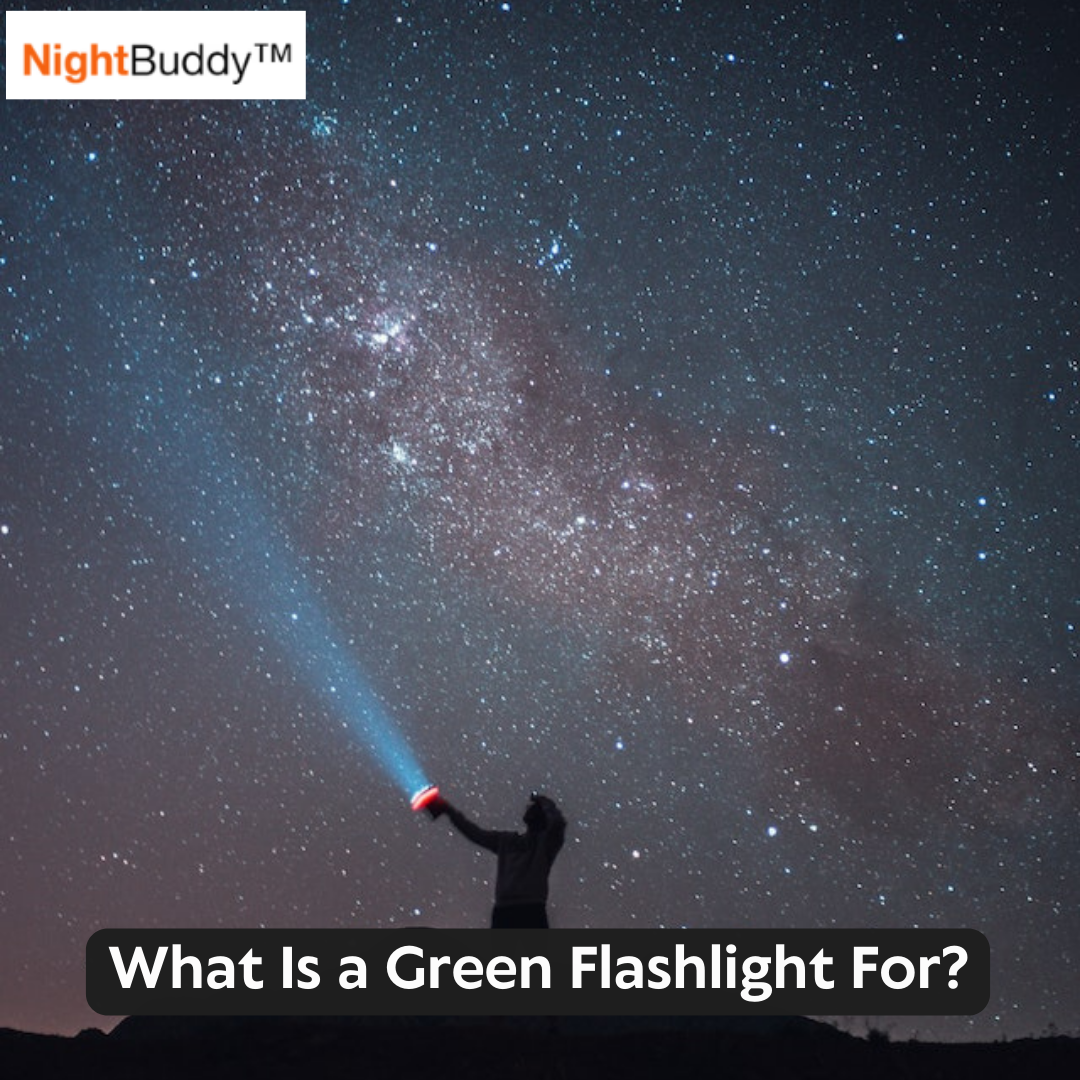Flashlights are essential tools that come in handy in various situations. They provide a reliable light output source in low-light conditions, making them an indispensable item for outdoor enthusiasts, hikers, campers, and homeowners.
There are different types of flashlights, each with its unique features and benefits. In this comprehensive flashlight buying guide, we shall discuss different types of flashlights, essential features, and what to consider when buying flashlights.
Common types of flashlights you should buy
#1. Pocket Pen flashlight:

Pocket Pen Flashlight NightBuddy
A pocket flashlight is small and compact enough to fit in your pocket or purse. They are often used for everyday tasks such as finding keys or reading menus in a dimly lit restaurant. Some pocket pen flashlights are equipped with a clip for easy attachment to clothing or bags.
Each type of flashlight has its own unique features and benefits. When making your flashlight selection, consider what you will be using it for and which features are most important to you.
#2. Headlamp:

NightBuddy™ 230º LED Headlamp
A headlamp is a type of flashlight that is worn on the head with an adjustable strap. They leave your hands free to work or perform other activities in the dark. They are often used for activities such as camping, hiking, caving, or reading in bed. Some headlamps have different brightness settings and beam widths to suit different needs.
#3. Tactical flashlight:

NightBuddy Military Grade Tactical Flashlight
A tactical flashlight is designed for military and law enforcement use. They are typically made of durable materials such as aluminum and have a high lumen output to temporarily blind attackers or light up dark areas. Some tactical flashlights are equipped with a strobe mode, used by police officers to disorient suspects or signal for help.
Read more: What is a Green Flashlight for?
Essential features to consider when buying flashlights
When buying a flashlight, there are several essential features to consider that can impact its overall functionality and effectiveness. These features include:
- Brightness: Flashlight brightness is measured in lumens. A flashlight with higher number of lumens will produce the brightest light. The brightness you require will depend on your intended use for the flashlight. Read more here.
- Battery life: Flashlights can use a variety of batteries, including alkaline batteries, lithium batteries, disposable batteries and rechargeable batteries. You will want to consider the battery life of the flashlight and the battery type it uses, as well as the cost of replacing or recharging the batteries.
- Size and weight: Flashlights being an everyday carry, the size and weight of the flashlight can impact its portability and ease of use. If you plan on carrying the flashlight for long periods, you may want to choose a smaller, lighter model.
- Durability: Flashlights can be exposed to a range of conditions, from extreme heat to water exposure. Consider the durability of the flashlight and whether it can withstand the conditions you plan on using it in.
- Beam distance: The beam distance is the distance the light can travel before it becomes too faint to see. This is an important consideration if you need the flashlight to illuminate objects or areas at a distance.
- Focus: Some flashlights have an adjustable focus, which allows you to narrow or widen the beam of light. A focused beam can be useful for different applications, such as focusing on a small object while flood beams illuminate a larger area.
- Switch type: The type of switch used to turn the flashlight on and off can impact its ease of use. Some flashlights have a tail switch, while others have a side switch or even a twist switch.
- Peak beam intensity: Peak beam intensity is a measure of the maximum brightness of the flashlight at its brightest spot in the center of the beam. It is measured in candela (cd) and indicates how far the flashlight can project its beam. The higher the peak beam intensity, the farther the beam can reach.
- Additional features: Some flashlights may come with additional features, such as a strobe function or different beam patterns including a red light mode for preserving night vision. Consider whether these additional features are necessary for your intended use.
- Purpose: Consider the intended use of the flashlight. Will you be using it for outdoor activities for wide range illumination, outdoor sports, emergency preparedness, or to accomplish daily tasks around the house?
Tips for Maintaining Your Flashlight

Maintaining your flashlight is crucial to ensure it performs optimally and lasts longer. Here are some tips to help you maintain your flashlight:
- Clean the lens: The lens of your flashlight can become dirty, affecting its performance. Use a soft cloth to clean the lens regularly.
- Check the batteries: Always check the batteries to ensure they're working correctly. Replace them if they're low or dead.
- Store properly: Store your flashlight in a dry, cool place away from direct sunlight. Avoid exposing it to extreme temperatures or moisture.
- Lubricate moving parts: Use a silicone lubricant to lubricate the moving parts of your flashlight, such as the switch and threads.
- Check for damage: Regularly inspect your flashlight for any damage or wear and tear. Replace any damaged parts to prevent further damage.
Why should you own a flashlight?
A flashlight is a small investment that can provide a big return in terms of peace of mind and functionality. Aside from providing light in dark environments, owning a flashlight has several benefits, including:
- Emergency Preparedness: A flashlight is an essential item in any emergency preparedness kit. It can be used to navigate through a power outage, signal for help, or even defend yourself in a dangerous situation.
- Outdoor Activities: If you enjoy hiking, camping, or other outdoor activities, a flashlight is a must-have item. It can help you navigate through trails, set up camp, and even signal for help if you get lost.
- Everyday Use: Flashlights are useful for everyday tasks such as searching for lost items, fixing a leaky pipe under the sink, or inspecting dark corners of your home.
- Safety: A flashlight can provide an added sense of safety and security, especially when walking alone at night or in dimly lit areas.
- Convenience: With the advent of LED flashlight technology, flashlights have become smaller, lighter, and more powerful than their incandescent bulbs predecessors. LED flashlights can easily fit in your pocket or attach to your keychain, providing convenient access to light whenever you need it.
Read more: The Evolution and History of Flashlights [Detailed Timeline]
Finding the Perfect Flashlight for Your Needs

Choosing the perfect flashlight requires careful consideration of its features, intended use, and your personal preferences. With the right flashlight, you can enjoy the benefits of having a reliable source of light in various situations.
Consider the factors mentioned in this article, such as light output, battery life, durability, and size, when choosing a flashlight. Additionally, look for popular brands such as Surefire, Fenix, Olight, and Streamlight for high-quality and reliable flashlights. You can sample best flashlights from NightBuddy.
By following the tips mentioned above for maintaining your flashlight, you can ensure it lasts longer and performs optimally. With the right flashlight and proper maintenance, you can have a reliable source of light for all your needs.





Leave a comment
This site is protected by hCaptcha and the hCaptcha Privacy Policy and Terms of Service apply.